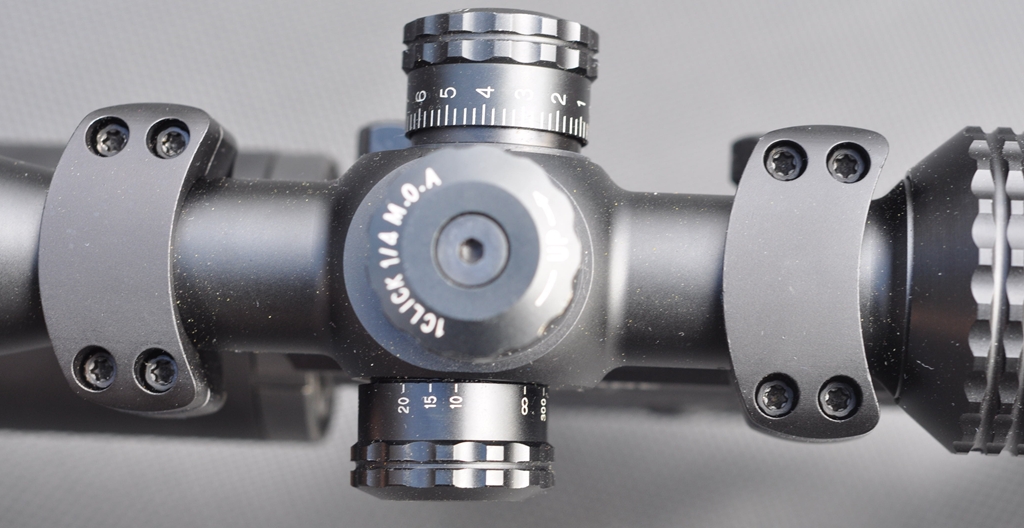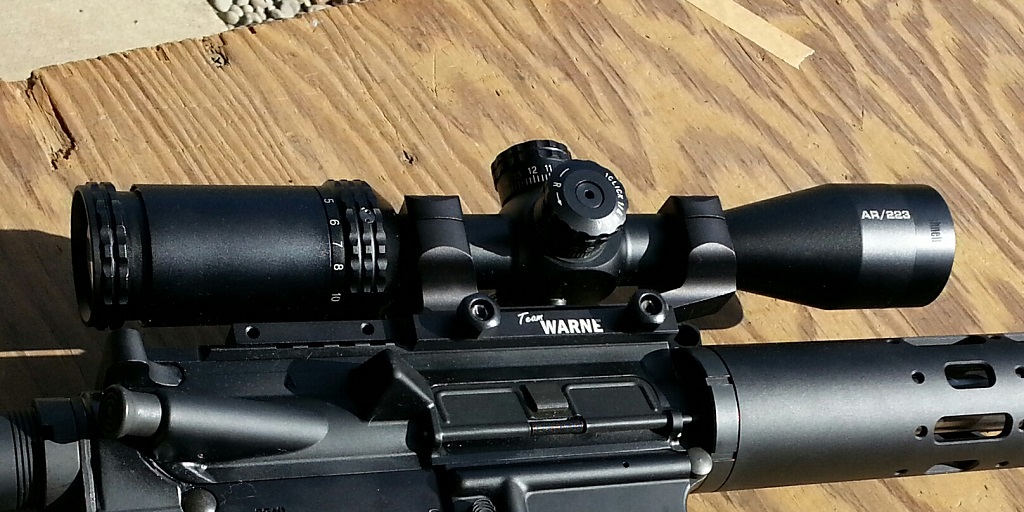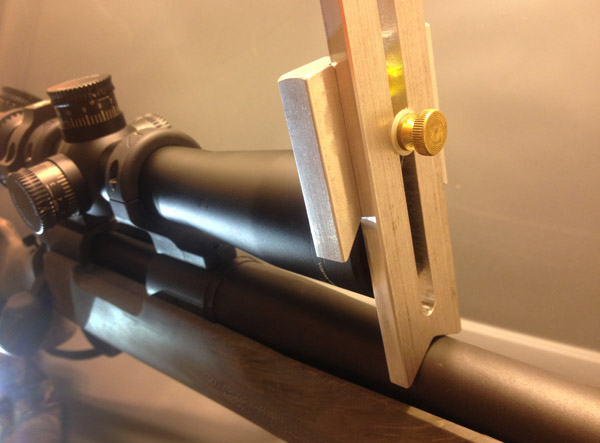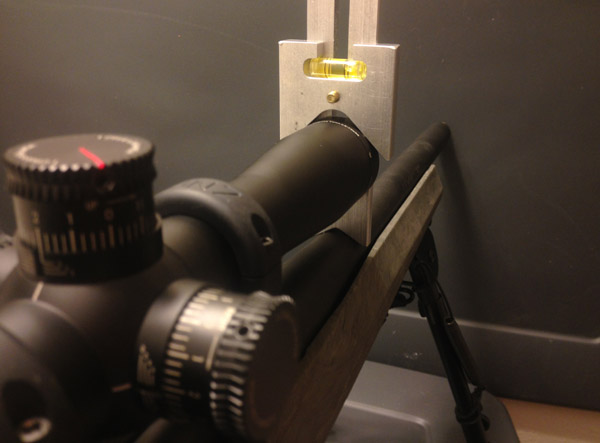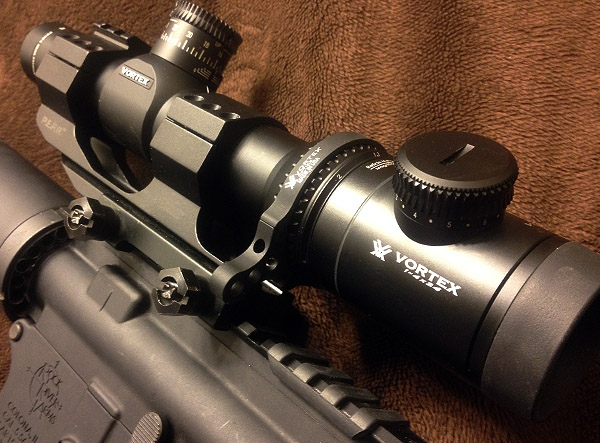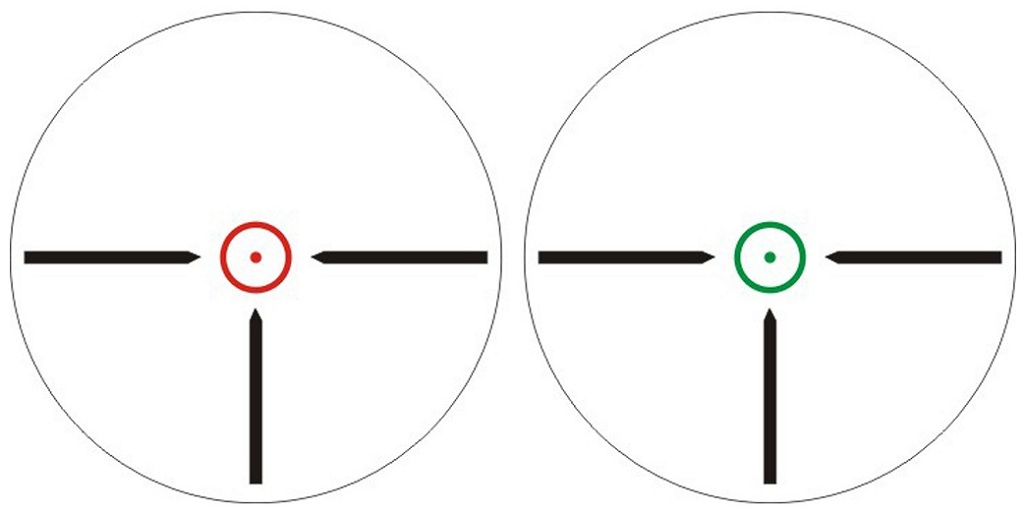Quality optics have become affordable for most shooters in the last few years. One no longer needs to spend $1000, or more, to get a clear quality optic. Primary Arms has been aiding us shooters with these types of optics. Their new Gen 2 SLx 3-18x50 FFP is one of those. This optic has features that should make it cost twice the price.
The Gen 2 SLx 3-18 is packed with features. Coming in first is its First Focal Plane (FFP) reticle. Yes, this $500 optic has a FFP Christmas tree style reticle. So when you zoom in, all the reticle’s MIL marks stay the same. This allows you to hold over for bullet drops, or wind, at any reticle setting. This particular optic uses Primary Arms’ ACSS Athena BPR Mil reticle. I won’t go much into the reticle’s design as it uses MIL’s in a very useful pattern. But, the reticle is illuminated to help one see better in low light. It’s pretty bright for this size of optic. This ACSS reticle also uses a small center chevron, think triangle, for aiming. Most optics like this just use a small dot. The top point of the chevron can be used for very precise shots, more so than if one were to use an optic with a small center dot. The other nice aspect to this reticle is its built in ranging ladder. The ladder is in the upper right hand portion of the optic. This puts it out in the part of the reticle that is seldom used. I really like how Primary Arms designed the ACSS Athena reticle. It is easy to use, even for someone like me that is used to using a MOA reticle. I even mentioned to Primary Arms that they were starting to convert me to MIL reticle scopes. Part of that comment was due to the SLx 3-18x50.
At 18x, Tower Light is approximately 350 yds away. Light is also 15” wide for ranging purposes.
Since I was talking about the reticle, let's go into the optics themselves. This SLx 3-18 gen 2 is exceptionally clear. This is why I say it far exceeds its class. I had zero problems with the clarity, even at its full magnification of 18x. I could easily make out 17 HMR holes in targets at 100yds. The crispness of the glass is also really good, though I did find it to drop off a little at longer ranges and at higher magnification, but it never caused any problems. I did find the parallax adjustment to be a little touchy. At least when focusing the parallax adjustment on targets between 200-400 yards. They were the hardest to get focused. Other ranges didn’t seem to be as touchy, even the lower ranges like 15-100 yds. I will give the SLx credit for having a parallax adjustment that goes from 10 yds to infinity. Other than those minor issues, the SLx 3-18 gen 2 has great glass for the money.
The function of the SLx 3-18x50 gen 2 has some outstanding features also. My absolute favorite is that this optic has a true zero stop on the elevation turret. Once you find out where your zero is, just set the stop and you will never have problems finding your zero again. No matter where you adjust to, just turn the back down until it stops, you are now at your zero setting. The turrets have been upgraded over the first gen SLx 3-18. They are larger so you can get a better feel on them. This also makes them easier to turn. These turrets also have fairly good clicks to them. You can feel and hear them. The elevation turret is a target style and not capped. The windage turret is capped….unless you want it to be a target style turret. Primary Arms includes a target style turret that you can replace the capped one with. So essentially you have the best of both worlds. I typically don’t dial for windage, so I left the turret in the capped version. One other feature, that Primary Arms added to the SLx 3-18 gen 2, is their changeable throw lever for the magnification ring. Instead of being stuck with whatever the optic company gives you, Primary Arms gives you options. The throw lever, that comes installed, is fairly tall and makes it easy to adjust magnification. But, if it’s not your thing, just take it off, or get one of the other throw lever options.
I installed the SLx 3-18x50 gen 2 on my semi-precision 243. Being that the 243 is not your standard 1000 yd cartridge, more of a 800 yd one, I thought this magnification range would be a perfect fit for it. All I can say is that it worked out great on this rifle. Don’t get me wrong, the SLx 3-18 gen 2 is perfectly capable of going out to 1000 yds clearly. My eyes are old and like a little more magnification when reaching out farther. A while back, 10x was adequate for 1000 yds. I view a 3-18 as more of a mid to long range optic. If I was looking for something in the longer range category, I’d look into the Primary Arms 5-25x56.
Primary Arms did a great job designing the SLx 3-18x50 FFP gen 2. Basically it reaches above its pay grade and into the realm of optics that cost twice its price. It has good optical clarity and a top notch reticle. The SLx 3-18 gen 2 also functions extremely well with those large turrets and zero stop. It is a little on the heavy side, but for $500 you can’t go wrong. So if you think you might need a top notch, value priced optic, in the 3-18 power range, do yourself a favor and check out the SLx 3-18x50 gen 2 from Primary Arms
Firearms Insider Reviews - Key Points
Claim to Fame:
First Focal Plane mid-power optic with a great feature set
Target Market:
Precision shooters and hunters
Features & Benefits of this product:
CR2032 3V Lithium Battery
Eye Relief: Low: 3.5in. / High: 3.9in.
Field View at 100: Low: 35ft. / High: 5.9ft.
First Focal Plane
Red Illuminated Reticle with 6 brightness levels
Length: 13.6 in.
Magnification: 3X - 18X
ACSS ATHENA BPR MIL Reticle
0.1 Mil Click Adjustment Value
Total Elevation Adjustment: 100 MOA
Total Windage Adjustment: 64 MOA
30mm Tube Diameter
Weight: 32.04 oz
Zero Stop Elevation Adjustment
Lifetime Warranty
What other aesthetic options or finishes are available?
Apollo 6.5cr/224v and 308/6.5g reticles
What others are saying?:
Nothing found as of publishing
Link to other reviews:
Price point:
MSRP = $499.99
Retail = Same
I need it now! Availability:
Our Rating:
Pros:
Clear Glass
Price
Zero Stop
Larger Turrets
Extra Dial Turret for Windage
Cons:
Parallax adjustment is touchy
Heavy
Score: 8.00 Great
Favorite Link: Primary Arms SLx 1x Prism review
























